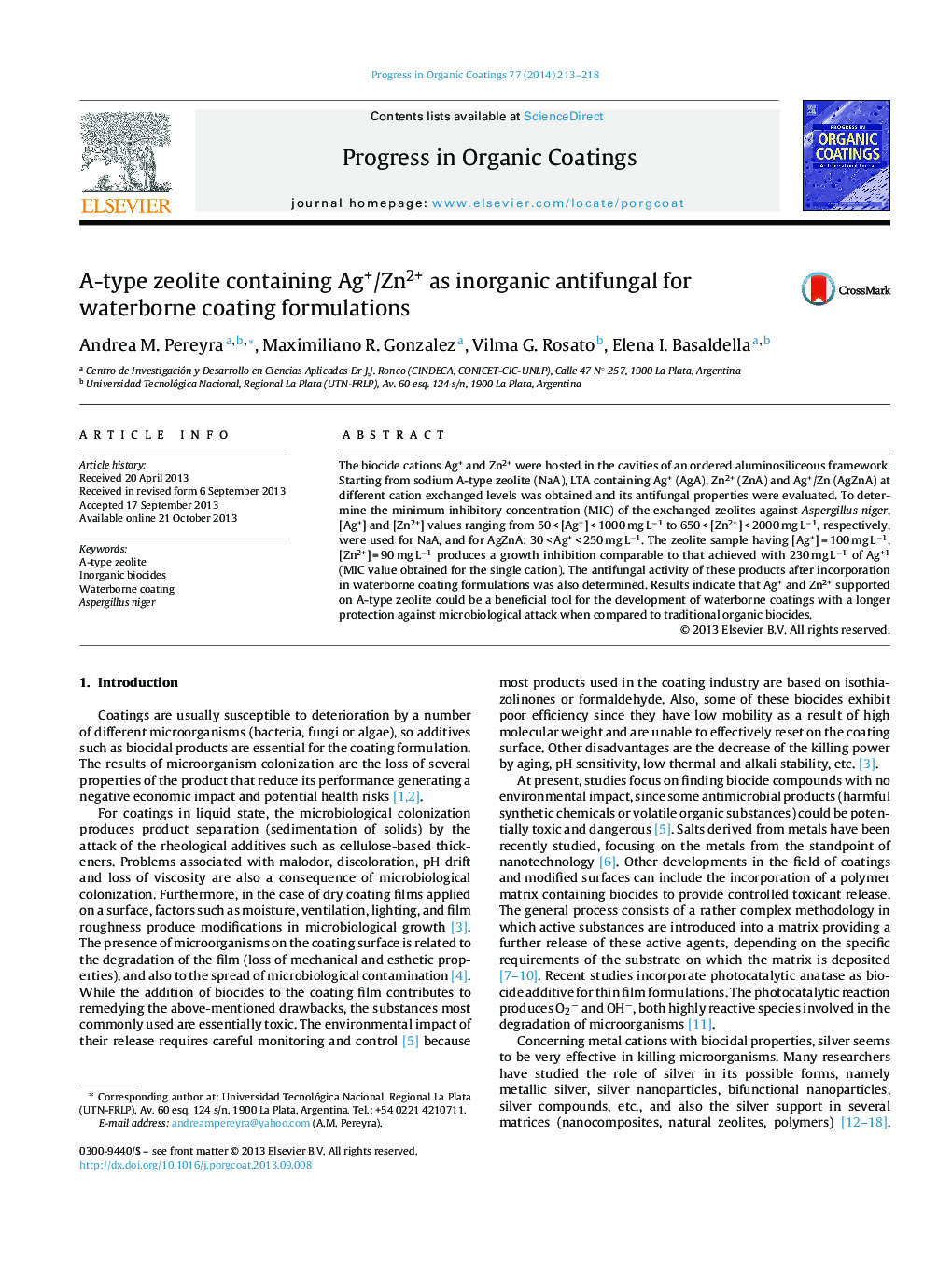| کد مقاله | کد نشریه | سال انتشار | مقاله انگلیسی | نسخه تمام متن |
|---|---|---|---|---|
| 692890 | 889855 | 2014 | 6 صفحه PDF | دانلود رایگان |

• The biocide cations Ag+ and Zn2+ were hosted in the cavities of an ordered A-type zeolitic framework.
• Minimum inhibitory concentration values of these products against Aspergillus niger were determined.
• Similar inhibitory effects against A. niger fungus were attained when a fraction of silver is partially replaced by zinc.
• The result suggests a synergic effect due to the presence of both cations.
• Ag+ and Zn2+ supported on A-type zeolite could replace traditional organic biocides in waterborne coatings formulations.
The biocide cations Ag+ and Zn2+ were hosted in the cavities of an ordered aluminosiliceous framework. Starting from sodium A-type zeolite (NaA), LTA containing Ag+ (AgA), Zn2+ (ZnA) and Ag+/Zn (AgZnA) at different cation exchanged levels was obtained and its antifungal properties were evaluated. To determine the minimum inhibitory concentration (MIC) of the exchanged zeolites against Aspergillus niger, [Ag+] and [Zn2+] values ranging from 50 < [Ag+] < 1000 mg L−1 to 650 < [Zn2+] < 2000 mg L−1, respectively, were used for NaA, and for AgZnA: 30 < Ag+ < 250 mg L−1. The zeolite sample having [Ag+] = 100 mg L−1, [Zn2+] = 90 mg L−1 produces a growth inhibition comparable to that achieved with 230 mg L−1 of Ag+1 (MIC value obtained for the single cation). The antifungal activity of these products after incorporation in waterborne coating formulations was also determined. Results indicate that Ag+ and Zn2+ supported on A-type zeolite could be a beneficial tool for the development of waterborne coatings with a longer protection against microbiological attack when compared to traditional organic biocides.
Journal: Progress in Organic Coatings - Volume 77, Issue 1, January 2014, Pages 213–218